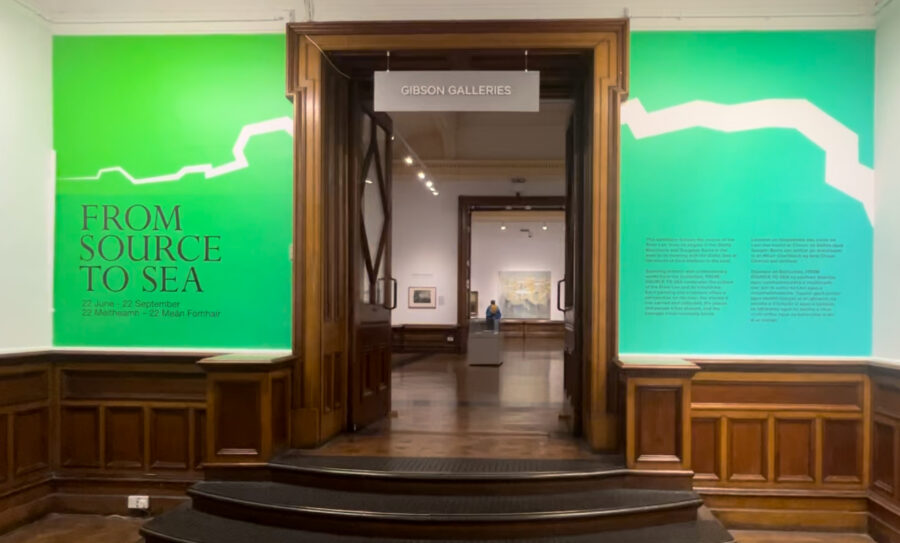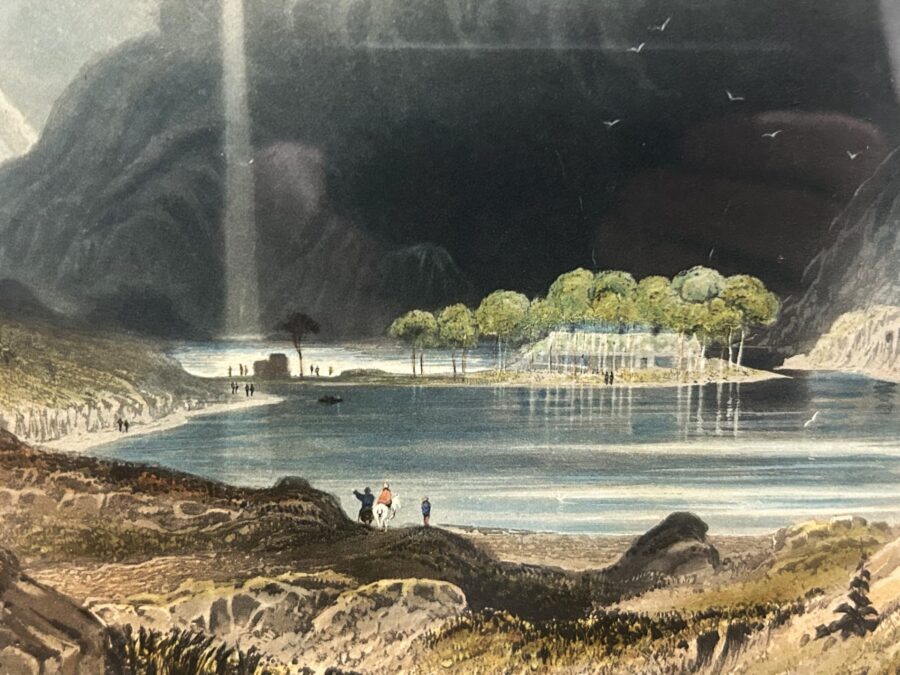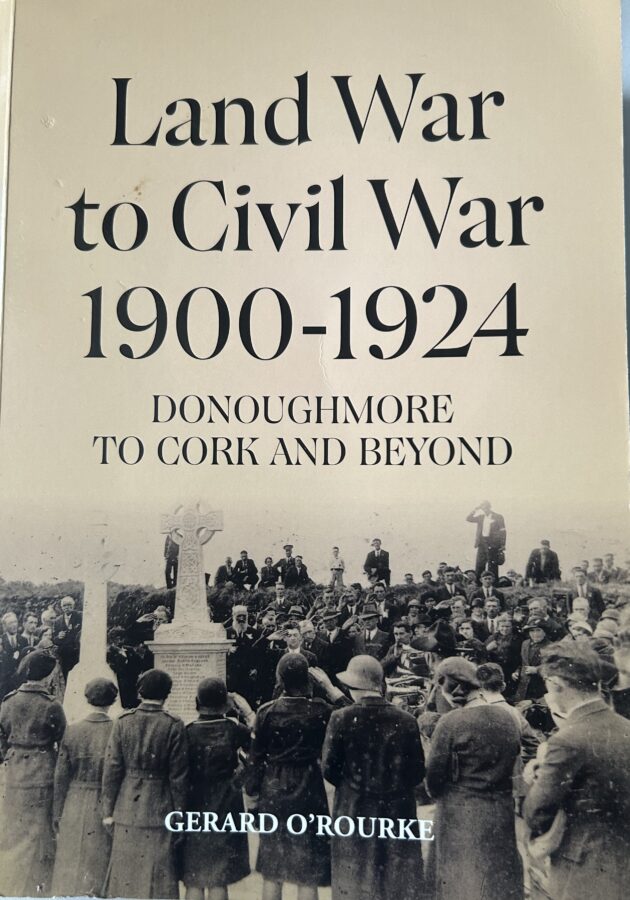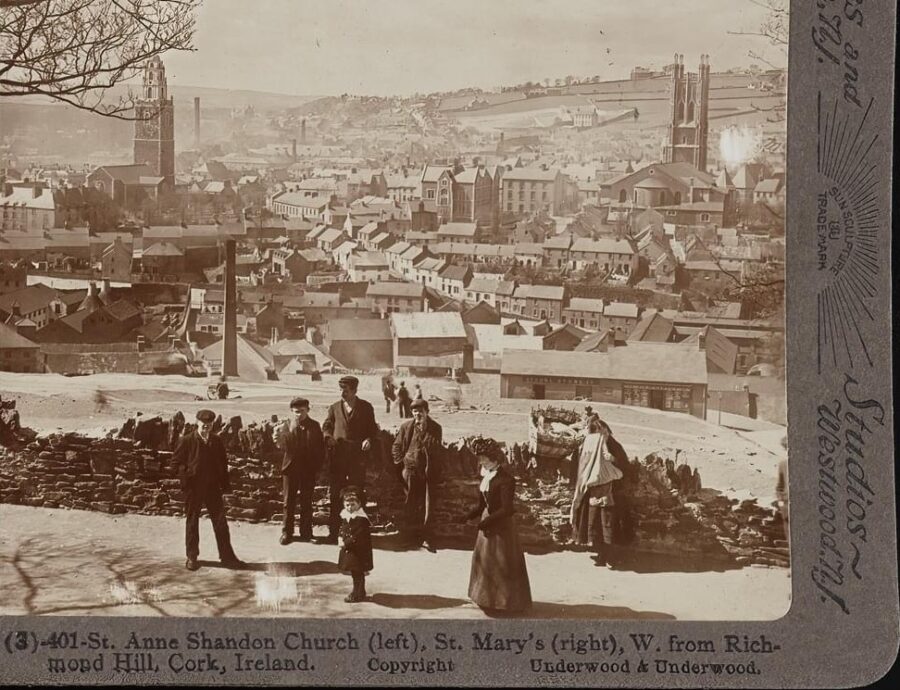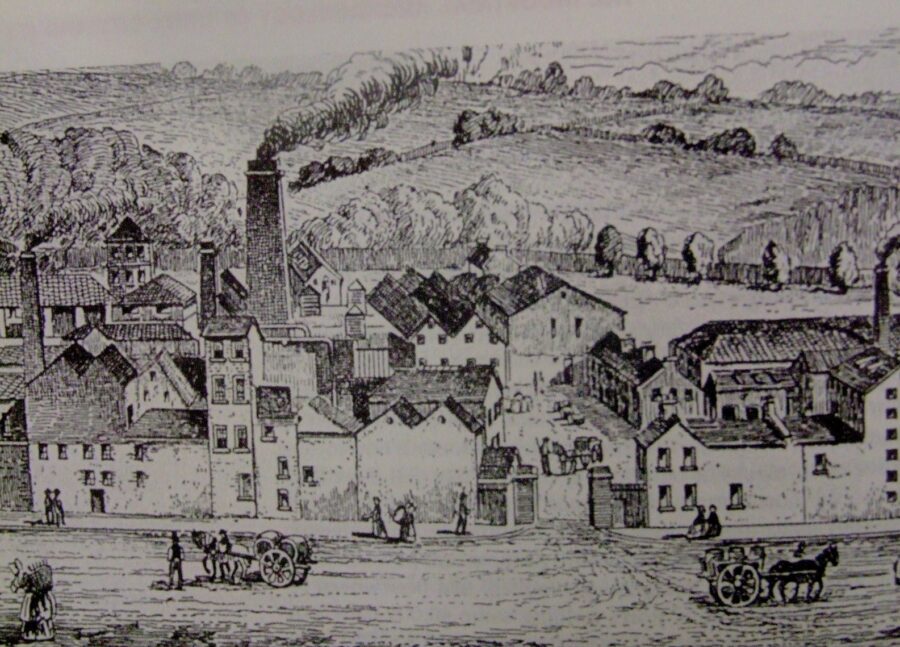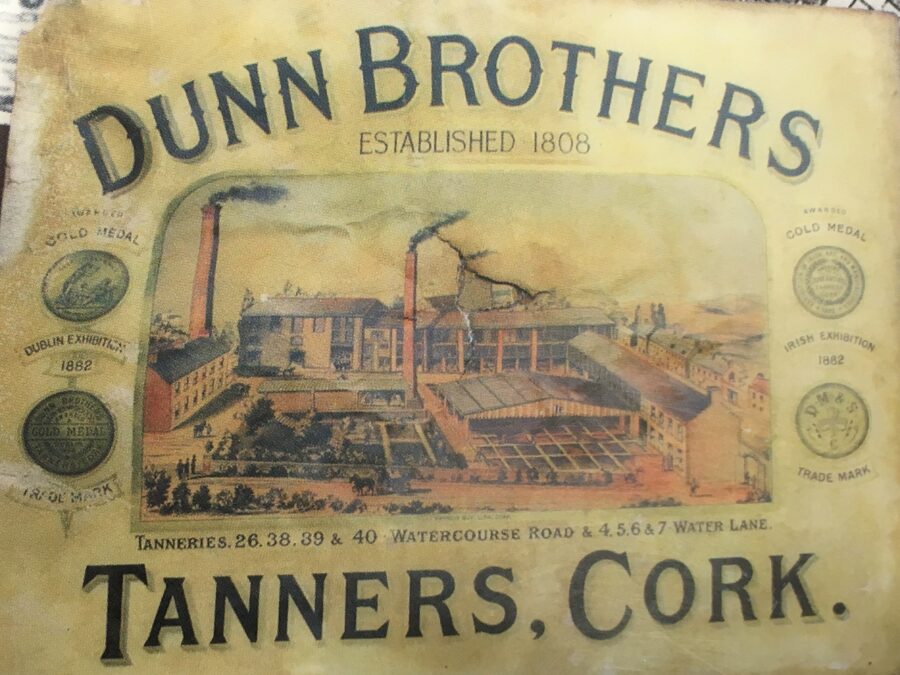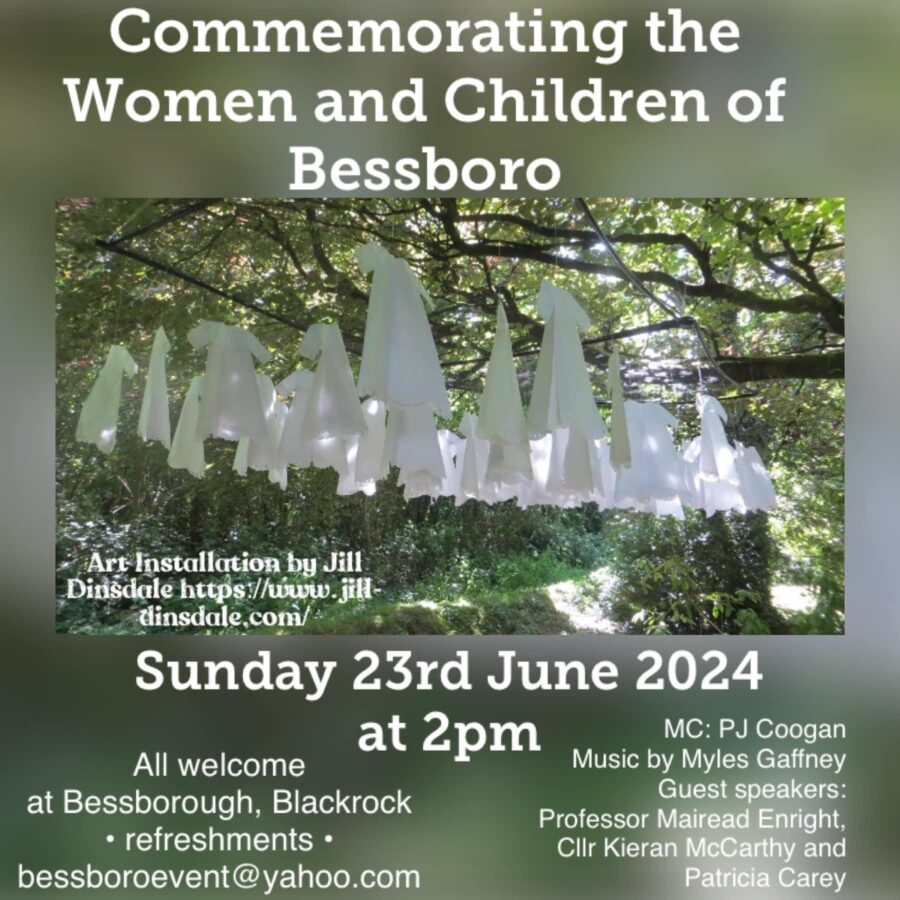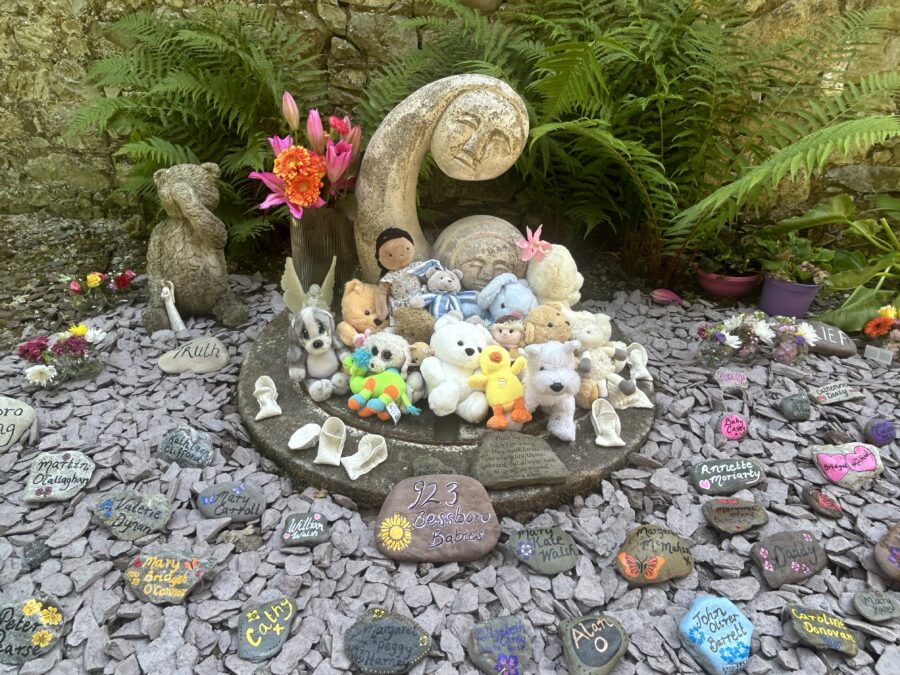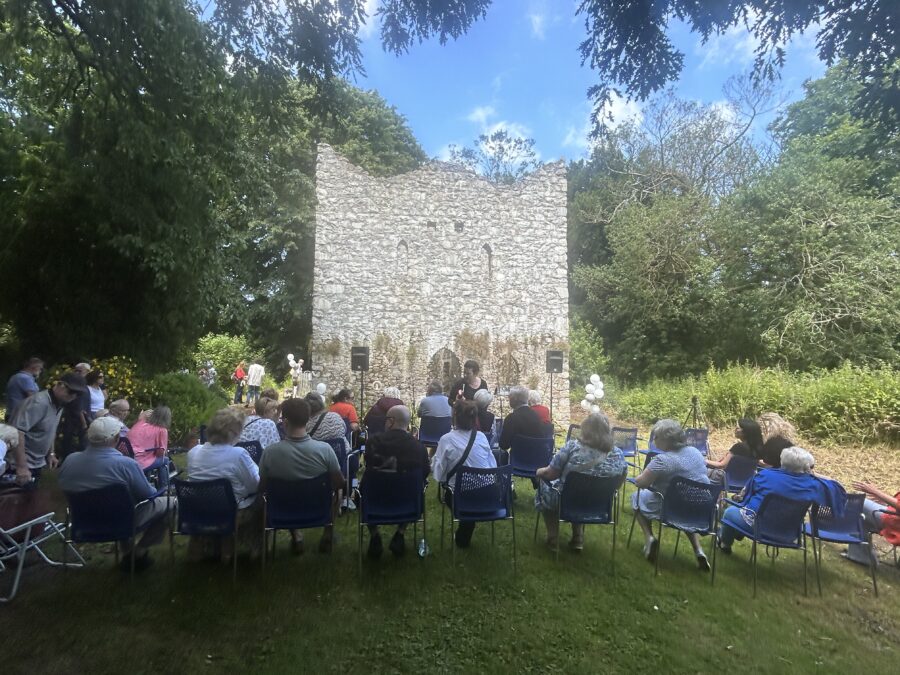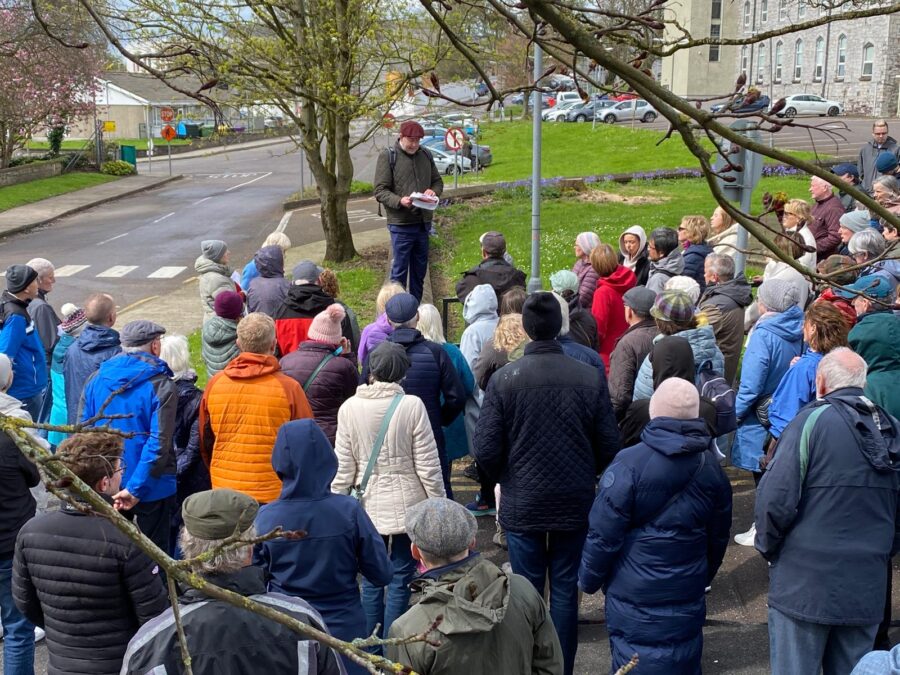
Kieran’s Our City, Our Town Article,
Cork Independent, 8 August 2024
Kieran’s National Heritage Week Tours, 17-25 August 2024
Another summer month to come and more opportunities to take a historical walking tour. The tours I have chosen for National Heritage Week this year are all important areas in the city’s development plus they all have a unique sense of place and identity. I will host eight tours, and all are free. There is no booking required bar the one for Cork City Hall for Cork Heritage Open Day.
Saturday 17 August 2024, A Tour of Cork City Hall as part of Cork Heritage Open Day, 10am, meet at entrance at Anglesea Street (90 minutes, booking required at Cork Heritage Open Day website with Cork City Council).
Learn about the early history of Cork City Hall and Cork City Council; learn about the development of the building and visit the Lord Mayor’s Room. The current structure replaced the old City Hall, which was destroyed in the Burning of Cork in 1920. It was designed by Architects Jones and Kelly and built by the Cork Company Sisks. The foundation stone was laid by Eamon de Valera, President of the Executive Council of the Irish Free State, on 9 July 1932.
Sunday 18 August 2024, Cork Through the Ages, An Introduction to the Historical Development of Cork City; meet at the National Monument, Grand Parade, 6.30pm.
Cork City city possesses a unique character derived from a combination of its plan, topography, built fabric and its location on the lowest crossing point of the River Lee as it meets the tidal estuary and the second largest natural harbour in the world. This tour explores the city’s earliest historical phases.
Monday 19 August 2024, Shandon Historical Walking Tour; explore Cork’s most historic quarter; meet at North Main Street/ Adelaide Street Square, opp Cork Volunteer Centre, 6.30pm.
Tradition is one way to sum up the uniqueness of Shandon Street. Despite being a physical street, one can stroll down (or clamber up), the thoroughfare holds a special place in the hearts of many Corkonians. The legacy of by-gone days is rich. The street was established by the Anglo-Normans as a thoroughfare to give access to North Gate Drawbridge and was originally known as Mallow Lane. Different architectural styles reflect not only the street’s long history but also Cork’s past.
Tuesday 20 August 2024, The Northern Ridge – St Patrick’s Hill to MacCurtain Street; Historical walking tour of the area around St Patrick’s Hill – Old Youghal Road to McCurtain Street; meet on the Green at Audley Place, top of St Patrick’s Hill, 6.30pm.
This is a tour that brings the participant from the top of St Patrick’s Hill to the eastern end of McCurtain Street through Wellington Road. The tour will speak about the development of the Collins Barracks ridge and its hidden and interesting architectural heritage.
Thursday 22 August 2024, The Lough and its Curiosities; historical walking tour; meet at green area at northern green of The Lough, entrance of Lough Road to The Lough, Lough Church end; 6.30pm.
This walking tour explores the Lough, its heritage and the rich surrounding history of this neighbourhood of the city. This amenity has witnessed eighteenth century market fairs as well as ice skating to nineteenth century writers and nursery gardens to twentieth century cycling tournaments and the rich and historic market garden culture.
Friday 23 August 2024, Douglas and its History, historical walking tour in association with Douglas Tidy Towns; Discover the history of industry and the development of this historic village, meet in the carpark of Douglas Community Centre, 6.30pm.
The story of Douglas and its environs is in essence a story of experimentation, of industry and of people and social improvement. The story of one of Ireland largest sailcloth factories is a worthwhile topic to explore in terms of its aspiration in its day in the eighteenth century. That coupled with the creation of forty or so seats or mansions and demesnes made it a place where the city’s merchants made their home in. Douglas makes also makes for an interesting place to study as many historical legacies linger in village’s surrounding landscapes.
Saturday 24 August 2024, The City Workhouse, historical walking tour; learn about Cork City’s workhouse created for 2,000 impoverished people in 1841; meet just inside the gates of St Finbarr’s Hospital, Douglas Road, 1.30pm.
The Cork workhouse, which opened in December 1841, was an isolated place – built beyond the toll house and toll gates, which gave entry to the city and which stood just below the end of the wall of St. Finbarr’s Hospital in the vicinity of the junction of the Douglas and Ballinlough Roads. The Douglas Road workhouse was also one of the first of over 130 workhouses to be designed by the Poor Law Commissioners’ architect George Wilkinson.
Sunday 25 August 2024, Sunday’s Well historical walking tour with Cllr Kieran McCarthy; discover the original well and the eighteenth century origins of the suburb, meet at St Vincent’s Bridge, North Mall end, 1.30pm.
Sunday’s Well was a famous landmark through the ages and the adjoining district took its name from the well. In 1644, the French traveller M de La Boullaye Le Gouz, visited Ireland. In the account of his journey he writes: “A mile from Korq [Cork] is a well called by the English, Sunday Spring, or the fountain of Sunday, which the Irish believe is blessed and cures many ills”. Walk from Wise’s Hill to the heart of Sunday’s Well and learn about the development of an eighteenth century suburb.
Caption:
1265a. Historical walking tour of St Finbarr’s Hospital earlier this year with Cllr Kieran McCarthy (picture: Marcelline Bonneau).
